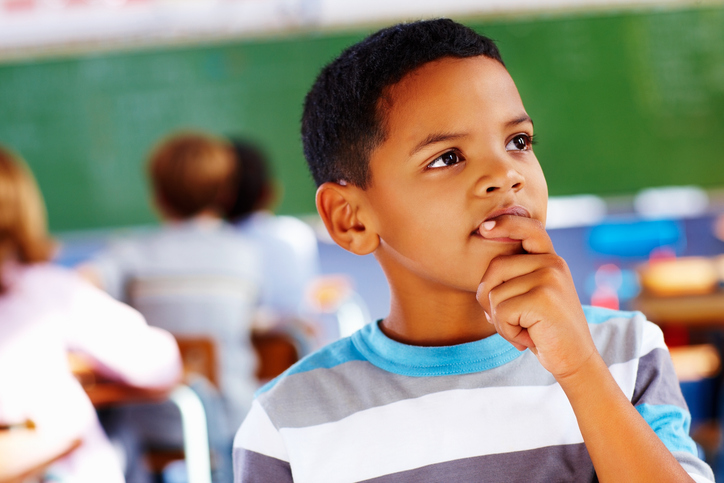
It is imperative that students have access to culturally responsive materials that help them understand not only themselves but others as well. Research shows when students have books and lessons that reflect who they are, they are more engaged, achieve greater learning outcomes, and are more empathetic to their classmates.1 When educators provide this essential support, they honor the rich and diverse experiences of their students by sharing stories that are reflective of those experiences.
To make this a reality, educators, authors, publishers, and literacy advocates must come together to help introduce even more students and their families to books that honor and celebrate cultures of all kinds. There is no better time than the present to explore each other’s cultures through literacy to help unify students. Here are some ways to increase access to culturally responsive materials, strengthen family and school connections, and improve learning outcomes for schools and students.
Increase Access to Culturally Responsive Materials
Increasing overall book access is critical for all students. We should take this even further and place our focus on the types of books that we make available to students as well. By showing students stories with different customs, traditions, languages, and lifestyles than their own, students can gain positive insight and respect for other people and their experiences.
For example, Haitian Creole is one of the most common native languages of multilingual learners, and very few classrooms have access to high-quality books about Haitian American culture. This gap in access struck us at Scholastic as an issue impacting students across the country that we could help solve.
Together with Haitian American authors, Scholastic is introducing classrooms to the rich history of Haitians and Haitian Americans through authentic and engaging texts that truly display the wonder and vibrancy of the Haitian Community.2
This collection is the first of its kind, offering a mixture of bilingual Haitian Creole and English literature. Earlier this year, actor, author, and program mentor Jamie Hector met with students in Boston for a read-aloud to celebrate Haitian Heritage Month and to introduce kids to culturally responsive books that help build knowledge and enhance vocabulary. Our Community: Haitian Heritage is the first in a series of multicultural book collections that will honor the rich and diverse experiences of English learners.
Resources like Our Community help break down barriers and dissolve stereotypes—pushing students to broaden their worlds and not only think critically about their thoughts and feelings toward others but also to learn from those others. This in turn leads to more empathy in the classroom, where every student, regardless of their home language or culture, can celebrate their peers and their own experiences. Developing materials that highlight the globe’s many cultures and ethnicities is vital for students to see and understand the power of sharing and belonging.
Strengthen Family and School Connections with Reading
Books can be a powerful tool to help build connections and enhance existing relationships between students, families, educators, community, and district leaders, especially when these books reach kids at every access point, including in their own homes. Research shows that children are awake for about 6,000 hours a year, and only about 1,000 of those hours are spent in school.3 To truly increase access to books, and to address the inequities in this process, we must pay attention not only to schools but to the places where children spend those other 5,000 hours, and work to strengthen family and school connections through literacy.
Inviting families and guardians to share the classroom experience is one simple way that students and their caregivers can feel connected to their schools and communities, strengthening this vital relationship. We see great success when schools and districts encourage communities to come together to read aloud, be it when the author of a popular children’s book reads to a classroom or family members or community/business leaders become more involved. In fact, we know that 52% of kids say they enjoy going to community events that involve reading.4 When students and families feel welcomed and valued by their schools and communities, student engagement levels rise and overall family engagement tends to increase.
Additionally, we need to offer children plenty of book choice, so they are even more inclined to read. Helping build home libraries is one way to achieve this. When students have access to books at home, and supportive families who read aloud with them, the possibilities are endless. Reading together and talking about books as a family is one of the most important things caregivers can do to support their children’s literacy journeys. More than half a century of literacy research supports this point, showing again and again that interactions young readers have at home with caregivers, from conversations to storytelling to reading aloud, play a significant role in academic success and beyond.5 These interactions can help children and families create stronger connections to their schools, as families will gain a better understanding of their children’s learning and become more interested in encouraging a love of reading.
When kids read more, they excel in areas other than academic proficiency. Creating an environment and positive relationships between schools, families, and communities that prioritize stories and books reflecting students is vital for kids to feel included, welcome, and motivated to achieve their goals.
Improve Learning Outcomes for Students
Throughout my (Jinica’s) time as a teacher, a significant portion of the students were English learners (ELs). It was apparent to me that these students showed the most interest in books with characters who looked like them or had similar backgrounds to themselves. When they came across books like these, they made a greater effort to comprehend what they were reading. By having access to more culturally responsive materials, they gained skills that were beneficial to their overall literacy development. We know that kids want books with characters who look like them and stories that feel familiar to them—they want to feel connected and recognized in the stories they encounter. We have a responsibility in the education world to ensure we are meeting our students’ needs.
Additionally, research from the Scholastic Kids and Family Reading Report found that nearly half of children who are Black or Hispanic have a difficult time finding books with characters who are like them, and over half of Black and Hispanic children age nine or older wish there were more books with diversity available.6 When they have culturally responsive book access with titles that feature strong protagonists and everyday, relatable stories, students can see themselves in a positive, powerful, and loving light, and so can their friends and peers. We can introduce them to books they will want to read over and over again. Children will become more engaged, chiming in with their own perspectives and developing even more confidence in their reading abilities. These culturally affirming stories can lead to impactful classroom conversations that will increase feelings of inclusion and leave a lasting impression upon children for years to come.
As a love of reading builds, these young readers will think of themselves as more capable and strive for books with higher difficulty levels as they feel stronger in their abilities. We also know that reading volume and exposure to books have a positive effect on students’ reading achievement and are powerful contributors to a variety of academic skills.7 This further stresses the importance of getting books in the hands of kids and its direct relationship to improving learning outcomes for students. The academic impact of these materials is long-lasting and life-changing.
Whenever and wherever students are reading, they deserve access to books that reflect their lives and the diversity of our world. It is never too early or too late to introduce these much-needed resources. A lack of representation in the stories we share with our children can lead to isolating experiences at any age.
It is our responsibility to ensure that all students, regardless of background, have access to the books they will want to read again and again. Books that will encourage children to build empathy, to learn more about the world around them, and to have the ability to put themselves in someone else’s shoes. By having a greater variety of diverse stories available to kids and their families, more young children will have the opportunity to connect through books to their cultures and to each other.
Links
1/ https://teacher.scholastic.com/education/researchpdf/topic_paper/home-libraries.pdf
2/ https://oomscholasticblog.com/post/new-classroom-collection-our-community-haitian-heritage
3/ www.carnegie.org/publications/joining-together-create-bold-vision-next-generation-family-engagement-engaging-families-transform-education
4/ www.scholastic.com/content/corp-home/kids-and-family-reading-report.html
5/ https://teacher.scholastic.com/education/rr-home-libraries.htm
6/ www.scholastic.com/content/corp-home/kids-and-family-reading-report.html
7/ https://teacher.scholastic.com/education/rr-home-libraries.htm
Michael Haggen is senior vice president, Scholastic Education Solutions.
Jinica Dauphin (jinica@phinpublishing.com) is a former Haitian American elementary school teacher and author of Haitian Hot Chocolate or Ginger Tea? and Soup Joumou Toujou?!: Soup Joumou Still?!





